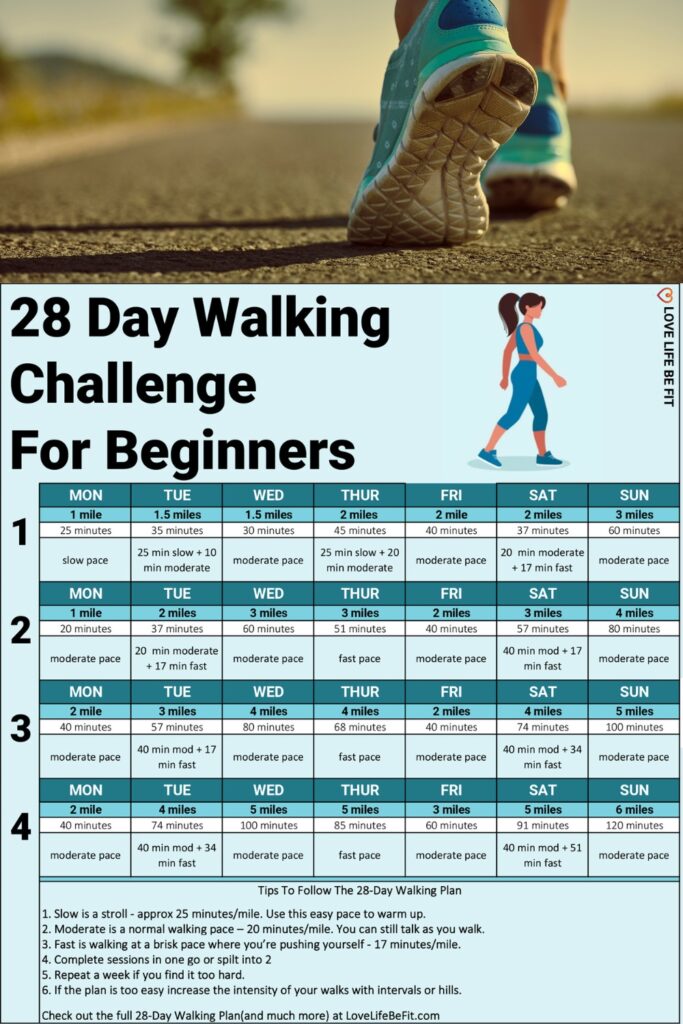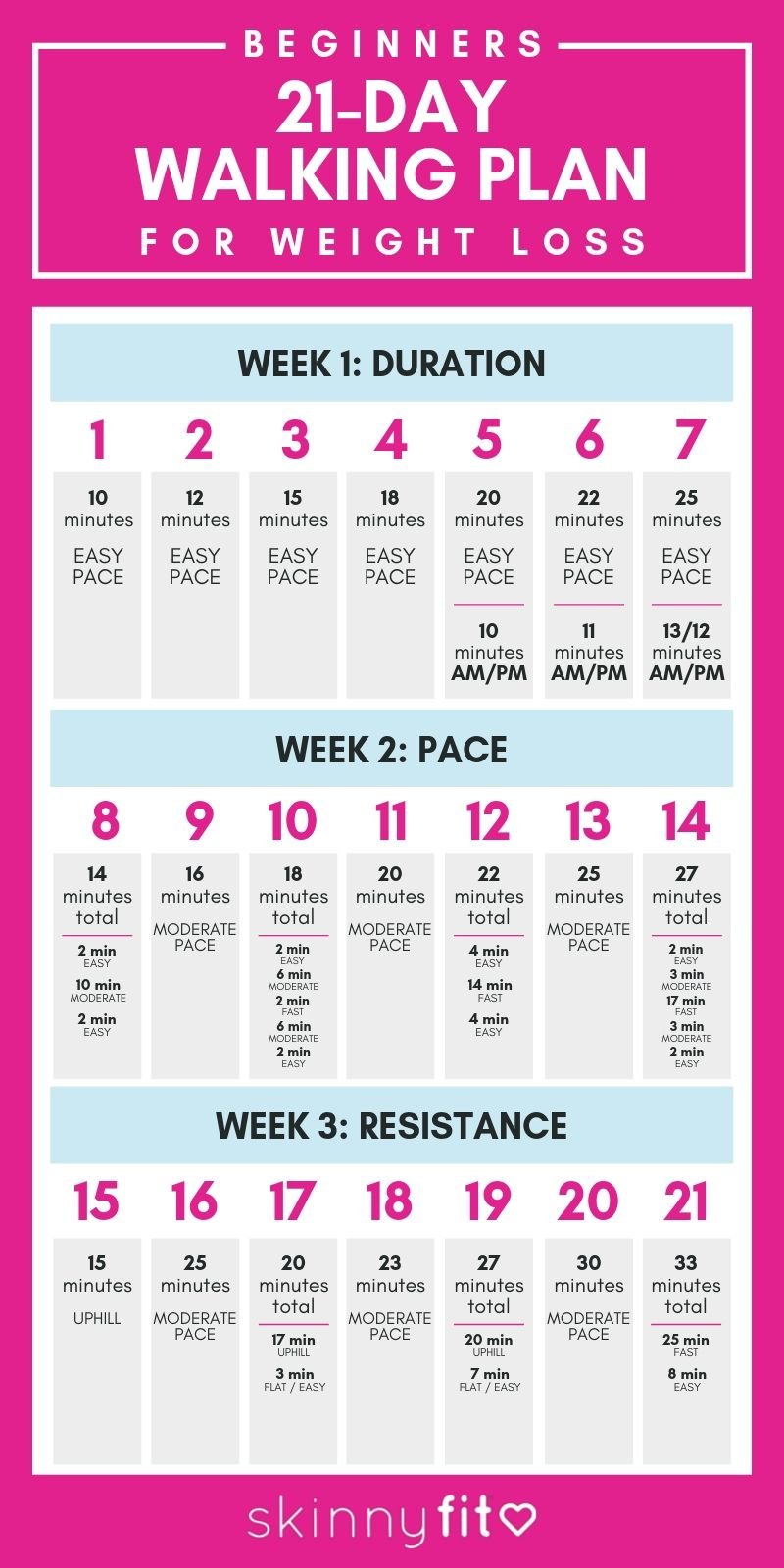Unveiling the Weight Loss Benefits of Walking
Walking 2 miles a day can significantly contribute to weight loss, making it an accessible and beneficial form of exercise for individuals of all fitness levels. The primary mechanism behind this weight loss is caloric expenditure, which occurs as your body uses energy to move during your walk. By consistently walking 2 miles a day, you can create a caloric deficit that promotes weight loss.
Increased metabolism is another weight loss benefit of walking 2 miles a day. Regular exercise helps build lean muscle mass, which in turn increases your resting metabolic rate. This means that your body will burn more calories even when you’re not actively walking, facilitating weight loss and maintenance.
Walking can also help manage appetite control, an essential aspect of weight loss. Engaging in regular physical activity has been shown to reduce feelings of hunger and increase satiety, making it easier to adhere to a balanced diet and maintain a caloric deficit. Furthermore, walking outdoors has been associated with reduced stress and improved mood, which can help prevent emotional eating and promote healthier food choices.
How to Effectively Implement a Daily 2-Mile Walk for Weight Loss
Integrating a daily 2-mile walk into your weight loss routine can be both enjoyable and rewarding. To maximize the benefits of walking for weight loss, consider the following actionable tips:
- Choose the right time of day: Schedule your walk for a time that suits your lifestyle and energy levels. Some individuals prefer walking first thing in the morning to kickstart their metabolism, while others find that an afternoon or evening stroll helps reduce stress and unwind after a long day.
- Master proper walking technique: To ensure an effective and safe walking routine, maintain good posture by keeping your head up, shoulders relaxed, and arms swinging naturally. Engage your core muscles and take steady, rhythmic steps, aiming for a brisk but comfortable pace.
- Track your progress: Monitoring your walking distance, duration, and intensity can help you stay motivated and accountable. Utilize fitness trackers, smartphone apps, or a simple pedometer to track your progress and celebrate milestones.
The Role of Consistency in Walking-Induced Weight Loss
Consistency is a crucial factor in achieving weight loss through daily walking. By incorporating a 2-mile walk into your daily routine, you create a steady caloric deficit that promotes weight loss over time. Consistency also fosters the development of healthy habits, which can lead to long-term weight management and overall well-being.
Walking regularly helps maintain your body’s metabolic rate, ensuring that you continue to burn calories at an efficient rate. Furthermore, consistent physical activity has been shown to improve cardiovascular health, strengthen muscles and bones, and enhance mood and mental clarity. By committing to a daily 2-mile walk, you not only support your weight loss goals but also invest in your overall health and well-being.
Incorporating Diet and Lifestyle Changes to Enhance Weight Loss
Combining a daily 2-mile walk with a balanced diet and other positive lifestyle changes can significantly accelerate weight loss and promote overall well-being. A nutritious, calorie-controlled diet is essential for creating a caloric deficit and ensuring your body receives the necessary nutrients for optimal health.
In addition to a balanced diet, consider incorporating the following lifestyle changes to further enhance your weight loss journey:
- Stay hydrated: Drinking plenty of water throughout the day can help control hunger, improve digestion, and support overall health.
- Get adequate sleep: Aim for 7-9 hours of quality sleep per night to help regulate hormones that control appetite and metabolism.
- Manage stress: High stress levels can contribute to weight gain and hinder weight loss. Engage in stress-reducing activities such as meditation, yoga, or deep breathing exercises to support your weight loss goals.
- Incorporate strength training: Adding strength training exercises to your routine can help build lean muscle mass, boost metabolism, and enhance weight loss.
Comparing Walking to Other Forms of Exercise for Weight Loss
Walking 2 miles a day is an excellent starting point for weight loss, but how does it stack up against other popular forms of exercise? Let’s analyze the relative merits of walking compared to running, swimming, and strength training for weight loss.
Walking vs. Running
Both walking and running can contribute to weight loss, but running generally burns more calories per mile due to its higher intensity. However, walking may be a more accessible and sustainable option for beginners or those with joint issues. To maximize caloric expenditure while walking, consider incorporating hills or varying your pace with intervals of faster walking.
Walking vs. Swimming
Swimming is a low-impact, full-body workout that can burn a significant number of calories. While swimming may burn more calories than walking in the same timeframe, it requires access to a pool or body of water and may not be as convenient for daily exercise. Walking, on the other hand, can be easily integrated into your daily routine and still provide substantial weight loss benefits.
Walking vs. Strength Training
Strength training, such as weightlifting or bodyweight exercises, builds lean muscle mass, which can increase metabolism and promote weight loss. While strength training may not burn as many calories as walking during the actual exercise, the increased metabolism from muscle growth can lead to more significant caloric expenditure over time. Combining walking with strength training can provide a well-rounded weight loss routine that addresses both cardiovascular health and muscle development.
Overcoming Common Barriers to Walking for Weight Loss
Walking 2 miles a day for weight loss is a simple and effective strategy, but several common obstacles may hinder individuals from incorporating this habit into their routine. Let’s identify and address these barriers to help you successfully integrate walking into your weight loss journey.
Time Constraints
Finding time to walk can be challenging, especially for those with busy schedules. To overcome this barrier, consider breaking your 2-mile walk into shorter sessions throughout the day or incorporating walking into your daily activities, such as walking to work, taking the dog for a walk, or walking during lunch breaks.
Motivation
Staying motivated to walk daily can be difficult, but setting achievable goals, tracking your progress, and celebrating milestones can help maintain your motivation. Additionally, finding a walking buddy or joining a walking group can provide accountability and make the experience more enjoyable.
Inclement Weather
Walking in adverse weather conditions can be unappealing, but having a backup plan can help you stay on track. Consider walking indoors on a treadmill, at a mall, or exploring indoor facilities such as museums or art galleries. Alternatively, invest in appropriate rain gear or warm clothing to enable walking outdoors in various weather conditions.
Success Stories: Real-Life Inspiration from Walkers Who Lost Weight
Discover the incredible journeys of individuals who have successfully lost weight through daily walking. These inspiring stories highlight the power of determination, consistency, and a healthy lifestyle in achieving weight loss goals.
Story 1: The Busy Professional
Meet John, a 45-year-old businessman who struggled to find time for exercise due to his demanding career. By incorporating two 1-mile walks into his lunch breaks, John was able to gradually increase his walking distance to 2 miles a day. Over six months, he lost 20 pounds and improved his overall health.
Story 2: The Stay-at-Home Parent
Sarah, a mother of two young children, found it challenging to dedicate time to exercise. She started walking her children to and from school, totaling 2 miles a day. Within a year, Sarah shed 30 pounds and gained the energy to keep up with her active family.
Story 3: The Senior Citizen
Retired teacher, Mary, was looking for a low-impact exercise to maintain her health. By walking 2 miles a day, she not only lost 15 pounds but also improved her balance, flexibility, and mental clarity. Mary’s story demonstrates that walking is a sustainable exercise option for all ages and fitness levels.
Maintaining Long-Term Weight Loss through Walking and Lifestyle Modifications
Walking 2 miles a day for weight loss is an excellent strategy, but maintaining long-term success requires sustainable lifestyle changes and consistent effort. By setting realistic goals, staying accountable, and celebrating milestones, you can ensure long-term weight loss and overall well-being.
Set Realistic Goals
Establishing achievable goals is crucial for long-term weight loss success. Instead of focusing on rapid weight loss, prioritize consistent progress and gradual lifestyle changes. For example, aim to walk 2 miles a day, five days a week, and gradually increase your walking distance or frequency over time.
Stay Accountable
Accountability is essential for maintaining motivation and adherence to your weight loss plan. Share your goals with a friend or family member, join a walking group, or use fitness apps to track your progress and stay accountable. Regularly assessing your progress can help you identify areas for improvement and celebrate your achievements.
Celebrate Milestones
Recognizing and celebrating your progress is vital for long-term success. Reward yourself for achieving milestones, such as walking a certain distance or maintaining your weight loss for a specific period. Opt for non-food rewards, such as a new pair of walking shoes, a massage, or a relaxing activity, to avoid sabotaging your weight loss efforts.








